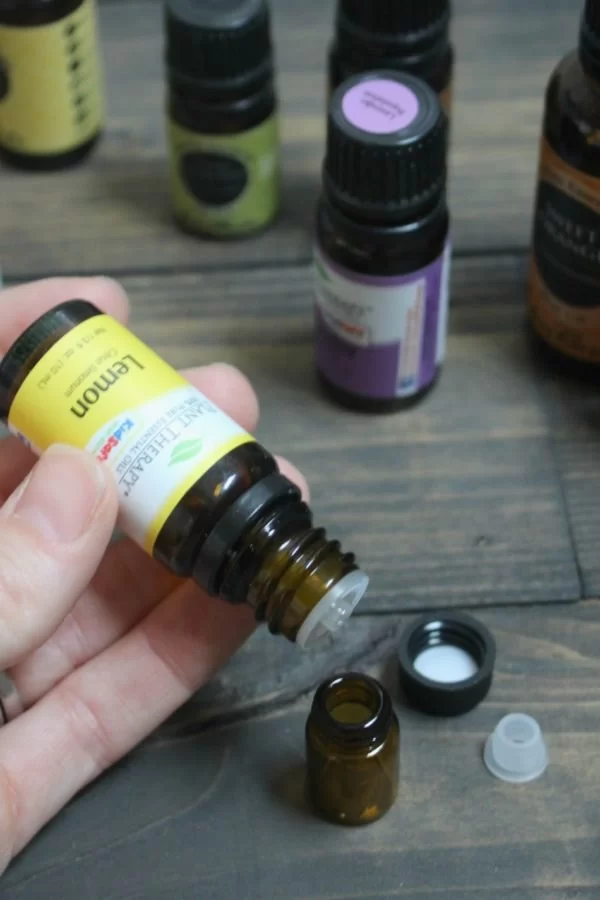How to Blend Essential Oils at Home – Easy Recipes for Beginners
- 1. What Are Essential Oils?
- 2. Why Blend Essential Oils?
- 3. Tools You Need for Blending Essential Oils
- 4. Easy Essential Oil Recipes for Beginners
- 5. Tips for Blending Essential Oils Like a Pro
1. What Are Essential Oils?
Essential oils are concentrated plant extracts that capture the natural fragrance and beneficial properties of plants. They are commonly used in aromatherapy, personal care products, and for their medicinal properties. Some popular essential oils include lavender, eucalyptus, peppermint, and tea tree oil.
The Benefits of Essential Oils
Essential oils are believed to have various health benefits, including stress relief, improved sleep, enhanced focus, and even pain management. They are typically used in diffusers, topically (when diluted), or in bath products to provide therapeutic effects on the body and mind.
2. Why Blend Essential Oils?
Blending essential oils allows you to create unique, personalized aromas and increase the potency of certain benefits. For example, combining lavender with chamomile may help promote relaxation, while blending citrus oils with mint can provide an energizing boost. Blending also enables you to balance the intensity of the fragrance, making it more pleasant and tailored to your preferences.
Creating Custom Blends
When you blend essential oils, you can create mixtures that suit your individual needs. Whether you're aiming for a calming atmosphere at home or a refreshing scent for your morning routine, blending gives you control over your experience. You can experiment with different oils to find the best combination for your mood or health goals.
3. Tools You Need for Blending Essential Oils
Before you start blending essential oils, it's important to gather the necessary tools to ensure a smooth process. Here’s a list of the basics you'll need:
1. Carrier Oils
Carrier oils are essential for diluting pure essential oils before applying them to your skin. Popular carrier oils include coconut oil, jojoba oil, and sweet almond oil. These oils are neutral and safe to use on your skin, ensuring that the essential oils are not too strong or irritating.
2. Measuring Tools
Accurate measurements are important when blending oils to achieve the desired strength and effect. Use a small measuring cup or dropper to carefully measure the oils. Some people also use essential oil blend calculators available online for more precise ratios.
3. Mixing Bottles or Jars
Once you have your essential oils and carrier oils, you'll need a clean container for mixing. Glass bottles are the best option, as plastic can react with the oils over time. Dark amber or cobalt blue bottles are ideal for protecting the oils from light and preserving their potency.
4. Easy Essential Oil Recipes for Beginners
If you’re new to blending essential oils, it’s best to start with simple, easy-to-follow recipes. Here are a few ideas to get you started:
1. Relaxing Lavender & Chamomile Blend
This calming blend is perfect for promoting sleep or relaxation after a stressful day.
- 5 drops lavender essential oil
- 5 drops chamomile essential oil
- 2 tablespoons sweet almond oil (or any carrier oil of your choice)
Mix the oils in a glass bottle and apply a few drops to your wrists or temples before bedtime for a soothing effect.
2. Energizing Citrus & Peppermint Blend
Need an afternoon pick-me-up? This refreshing blend is great for boosting energy and mental clarity.
- 4 drops lemon essential oil
- 4 drops orange essential oil
- 3 drops peppermint essential oil
- 2 tablespoons coconut oil
Use a diffuser to fill your space with this energizing aroma, or apply a few drops to the back of your neck for a quick mental refresh.
3. Stress-Relief Blend
If you're feeling stressed or anxious, this blend can help calm your nerves.
- 5 drops lavender essential oil
- 5 drops bergamot essential oil
- 3 drops ylang-ylang essential oil
- 2 tablespoons jojoba oil
Apply this blend to your pulse points or use it in a diffuser to relax and unwind after a long day.
5. Tips for Blending Essential Oils Like a Pro
Once you’re comfortable blending essential oils, here are some pro tips to help you refine your skills:
1. Start with a Base
When creating your own blends, it’s helpful to start with a base oil—usually a single essential oil that has a strong, distinct fragrance. From there, you can layer other complementary oils to create a balanced, complex scent.
2. Use Complementary Scents
When blending, choose essential oils with complementary scents. For example, floral oils like lavender and rose blend well with citrus oils, while earthy oils like sandalwood and patchouli go well with herbal oils like rosemary and thyme.
3. Keep a Record
It can be difficult to remember your exact recipes, so make sure to keep a journal of your blends. Note down the exact drops of each oil used, and be sure to test each blend before you use it for the first time to ensure it’s to your liking.
4. Experiment
Don’t be afraid to experiment! The beauty of blending essential oils is that you can tailor them to your preferences. Try new combinations, and don’t be afraid to adjust your ratios until you find the perfect blend.


0 comments